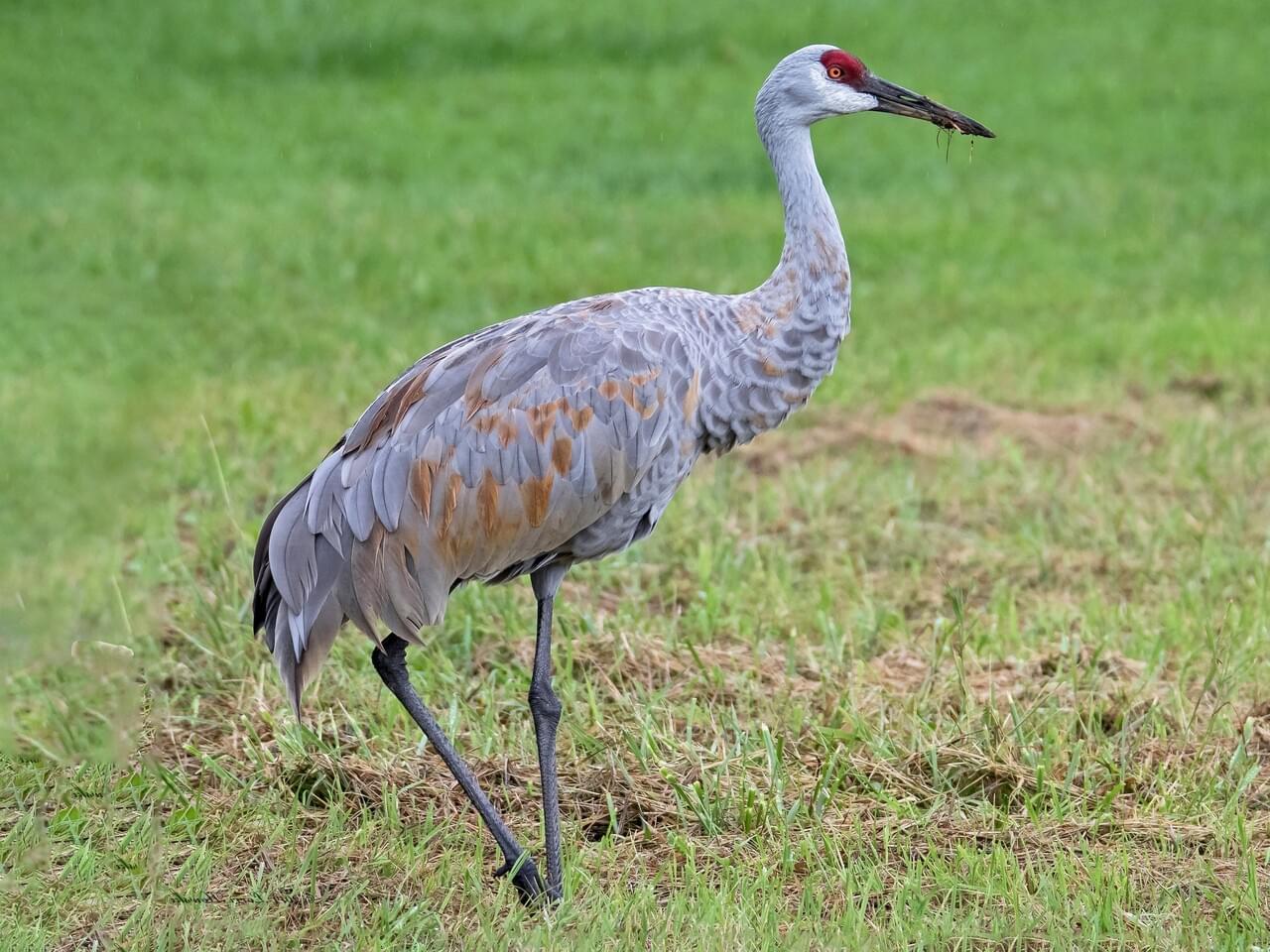Have you ever witnessed the breathtaking sight of a crane flock soaring through the skies or dancing in perfect unison? These magnificent birds, with their long crane legs and distinctive calls, have an almost magical quality that has inspired awe and wonder in humans across cultures and throughout history. Whether you’re lucky enough to spot a white sandhill crane or the critically endangered whooping crane, observing a crane flock in action is an unforgettable experience.
Table of contents
Open Table of contents
Feeding Habits of Crane Flocks 🍽️

Crane flocks are highly social birds that communicate through a variety of vocalizations, including bugling calls that can be heard from miles away. When it comes to feeding, these birds are opportunistic and adaptable. Sandhill cranes, for example, will forage in agricultural fields for grains like corn, wheat and soybeans, while also seeking out insects, mollusks, berries, plant tubers and acorns in their wetland habitats.
Whooping cranes, on the other hand, primarily feed on blue crabs, clams, and other aquatic creatures they find in the shallow waters of their coastal habitats. Watching a crane flock feed is a study in grace and precision, as they use their long legs and pointed bills to probe the ground or water for morsels.
The Nesting Practices of Crane Pairs 🔍

While crane flocks are a sight to behold, these birds form monogamous pairs that typically mate for life. In the early spring, a breeding pair will establish their territory and begin constructing their nest. Using aquatic vegetation like cattails, bulrushes, and sedges, the cranes build a mound over the water, forming a cup-shaped hollow.
Both the male and female take part in nest building, incubation, and raising their young. Even well-hidden nests can fall prey to predators, so crane parents are fiercely protective, sometimes even feigning a broken wing to draw threats away from their chicks. The sight of fuzzy crane chicks exploring their wetland home under the watchful eye of their parents is a heartwarming spectacle.
The Epic Crane Migration 🌏

One of the most awe-inspiring aspects of crane flocks is their incredible migration journeys. Each fall and spring, over 500,000 sandhill cranes gather along Nebraska’s Platte River, roosting in shallow waters and foraging in nearby cornfields. This staging area is a critical stopover on their journey, allowing the cranes to rest and refuel before continuing on.
Whooping cranes, with their distinctive white plumage and black wingtips, undertake an even more arduous migration. These birds travel over 2,400 miles from their breeding grounds in Canada to their wintering sites along the Gulf Coast of Texas, facing threats from habitat loss, power line collisions, and illegal hunting along the way. Organizations like the International Crane Foundation work tirelessly to protect these endangered birds and ensure the continuation of their ancient migration routes.
The Enchanting Crane Dance 💃🕺
Perhaps the most enchanting aspect of crane behavior is their mesmerizing dance rituals. Both sandhill cranes and whooping cranes engage in elaborate dances, leaping, bowing, and flapping their wings in a graceful display. These dances serve multiple purposes, from strengthening pair bonds and warding off rivals to relieving the stress of migration.
Crane dances have captured the human imagination for centuries, inspiring art, mythology, and cultural traditions worldwide. In Japan, the elegant red-crowned crane is a symbol of luck, longevity, and fidelity. Native American tribes have incorporated crane dances into their ceremonies and legends, viewing these birds as sacred messengers between the earthly and spiritual realms.
Witnessing a crane flock dancing in a misty field at dawn, their calls echoing across the landscape, is an almost spiritual experience that connects us to the ancient rhythms of the natural world. It’s no wonder that people travel from far and wide to crane festivals and viewing sites, hoping to catch a glimpse of these extraordinary birds in action.
Conclusion
From their unique feeding habits and nesting practices to their mind-boggling migrations and spellbinding dances, crane flocks are endlessly fascinating creatures that remind us of the beauty, resilience, and mystery of the natural world. Whether you’re an avid birdwatcher or simply someone who appreciates the wonder of nature, taking the time to learn about and observe these remarkable birds is an enriching and uplifting experience.
So the next time you hear the haunting call of a sandhill crane or spot the distinctive silhouette of a whooping crane against the sky, take a moment to marvel at the extraordinary lives of these ancient birds. By appreciating and protecting crane flocks and the wetland habitats they depend on, we help ensure that their mesmerizing rituals continue to inspire wonder in generations to come. 🙏